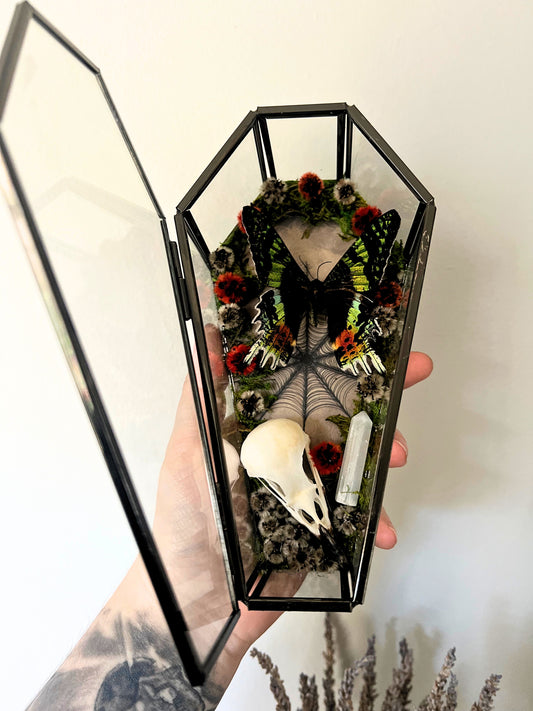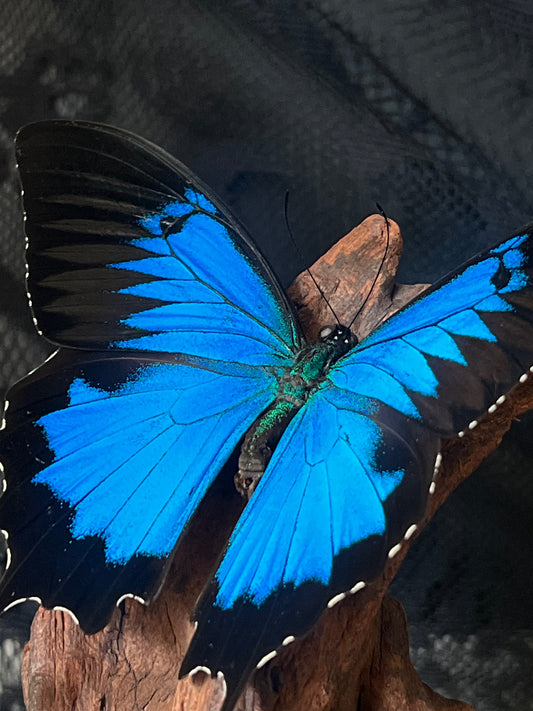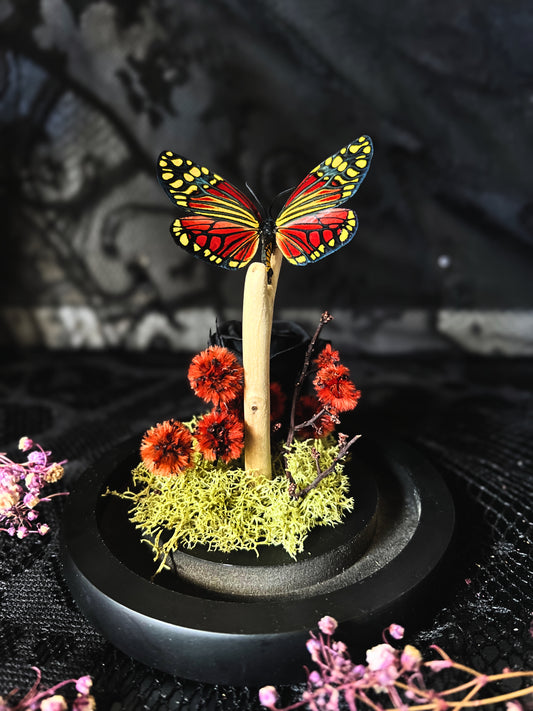
How to Care for Animal Skulls & Bones
Share
If you have just welcomed your first animal skull or bone into your home, or have been an avid collector for a while, learning how to best care for them is essential for preserving their natural beauty.
If you're reading this, you're most likely asking yourself, "How do I keep my animal skulls and bones clean? Do bones need sealing? Can animal skulls and bones rot or attract pests?" We've got your questions answered below!
Please note this blog is about how to care for animals skulls and bones which have already been cleaned, degreased and sterilized - we are not walking you through how to complete the process of cleaning animal skulls and bones found in the wild.
Why Bone Care Matters
Although animal bones, skulls and skeletons can look tough and resilient, they are prone to yellowing, cracking, insect infestations and becoming brittle over time if they are not stored properly or are exposed to moisture, dust and sunlight.
Whether it's a perfectly articulated bird skeleton or a magpie skull, a little care and love will go a long way to keep your specimens in excellent condition for a lifetime.
How to Clean Animal Bones & Skulls
Just like anything else within your home, bones collect dust and how you clean them matters.
Gently dust. Use a microfiber cloth or feather duster to gently whisk away dust. If you have more intricate skulls or bones with hard-to-reach crevices, a can of compressed air can help. Just make sure not to over-do it and be gentle.
Do not clean with water or sprays. The moisture can weaken and stain your bones.
💡 Pro Tip: Never submerge bones and skulls in water to "freshen them up". Bones are porous and can absorb moisture which will lead to mould and decay over time.
How to Store Animal Bones Safely
Animal bones and skulls are one of the coolest pieces to display in your home and curiosity cabinet, but there are a few things to consider when it comes to setting them up for display:
Avoid direct sunlight. UV rays and heat can dry out bones and cause them to become brittle. Always display your skulls and bones away from direct sunlight.
Humidity is the silent enemy. Always keep your bones and skulls in a cool and dry space. Avoid storing them in steamy bathrooms or kitchens. Humidity encourages mould and invites insects. If you live in a humid climate, using a dehumidifier will really help.
How to Keep Pests Away From Bones
If your bones have any remnants of soft tissue or grease, these can attract pests such as dermestid beetles and moths. To avoid damage from these creepy-crawlies:
Inspect new bones for pests. Before adding them to your collection, make sure to check that your new bones and skulls are free from pests first. It's also a good idea to double check that your current collection does not have any infestations, if you haven't checked already.
Take extra precautions. There's no harm in taking extra steps to avoid pests eating your bones. You could lightly spray an insecticide on the surface you will be placing your pieces on and wait for it to dry before setting it up for display.
What To Do if There Are Signs of Pests
Seal & freeze. Pop the affected bones or skulls in a sealed container and freeze it for 2 weeks to kill off the infestation. Continue to monitor to make sure everything has been killed off. If there are signs not everything has been killed off, follow this process again.
For larger infestations, you may need to fog the entire room. Use insecticidal products such as bug bombs and seal off the room where the item is kept. Set off the bug bomb and leave it undisturbed for at least 2 days.
Should I Seal Animal Bones for Display?
Bones don't need sealing most of the time, however, if you live in "high-traffic" or particularly dusty environments, a light sealant can help protect bones.
Spray with a matte clear coat. This will give your bones a natural finish. Just make sure to do a small test patch first!
Avoid glossy sprays. Unless you want that museum-glass sheen, we recommend avoiding glossy sprays to keep that natural look of your bones. Keep in mind that over-sealing can also discolour and trap moisture in the bone.
Best Way to Display Animal Skulls & Bones
Now that we've covered how to best care for your bones and skulls, let's talk about how you can show them off!
Keep it simple. Your animal skulls and bones can simply be placed on your cabinet, shelf, table, wherever is suitable!
Use display domes or cloches. If you have fragile or prized specimens, a dome will help not only keep these pieces safe, but serve as an excellent display tool.
Pop them in a shadow box. Skulls and bones look awesome displayed in a shadow box frame.
Avoid adhesive mounting putty. Applying these directly on the bones can cause them to stain over time.
Keep them out of pets and children's reach. Trust us, your pet or child does not want to be chewing on a crow mandible!
Bonus Tip: Respect Your Skulls & Bones
It's always good to remember the animal behind the specimen, whether you're collecting animal skulls and bones for their beauty, educational value or spiritual significance. Paying homage to the natural world can be done via sustainable sourcing and conscious care.
Caring for your animal skulls and bones doesn't need to be complicated. With regular check-ins, care and the right environment, your pieces can remain stunning and bug-free.
Got questions or want to add to your curiosity collection? Feel free to contact us at hello@corvusoddities.com or browse our sustainably sourced collection here. We ship Australia-wide and internationally. 🖤













